Kennedy Ulcers: Understanding, Identification, Care, and Significance in the End-of-Life

Kennedy ulcers are skin lesions that can develop in individuals nearing the end of life. This guide explores their appearance, causes, diagnosis, and treatment. It offers insights into identifying Kennedy ulcers and providing comfort through pain relief, hygiene, and repositioning. Additionally, it addresses the emotional impact and coping strategies for caregivers and loved ones.
Understanding Self-Soothing Sounds During the End-of-Life

The journey towards the end of life can be a challenging and emotional time, both for the individual facing the end of their life and for their caregivers and family members. One aspect of this journey that may be unfamiliar to many is the presence of self-soothing sounds made by the patient during the transition and actively dying phase. These sounds can be puzzling and sometimes unsettling for caregivers and family members who have never witnessed them. This article will explore self-soothing sounds, why they occur, and how caregivers and family members can distinguish between self-soothing sounds and signs of discomfort.
Navigating the Complex World of Dementia and Seizures
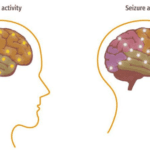
This article delves into the intricate relationship between dementia and seizures, offering insights on identification, safety protocols, and advocacy for caregivers.
Understanding the Common Journey Towards End-of-Life

Caring for a terminally ill loved one can be challenging and emotional. As an experienced hospice nurse case manager, you understand the importance of providing compassionate care and support to loved ones and their families. In this educational article, we will explore the common journey that terminally ill loved ones and their caregivers face as they approach the end of life. We will summarize this journey's various aspects, offering guidance and separating fact from fiction.
Hospice Nursing ADPIE
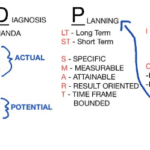
As a hospice nurse, you are vital in providing compassionate care to terminally ill patients and their families. To ensure the best possible outcomes, you rely on a systematic approach known as ADPIE: Assessment, Diagnosis, Planning, Implementation, and Evaluation. This process guides you in delivering holistic and individualized care, addressing not only the physical needs of patients but also their emotional, spiritual, and psychosocial well-being.
Admission Nurse: Essential Questions to Ask During the Hospice Admission Visit

As a hospice admission nurse, asking the right questions is crucial for assessing patients' eligibility and providing compassionate care. This article explores critical questions to understand the patient's condition, decline timeline, hospitalizations, functional abilities, cognitive status, and comorbidities. By gathering this information, nurses can support informed decisions, tailor interventions, and ensure a "good death" for patients and families.
Assessing Patients on the FAST Scale: A Guide for Nurses
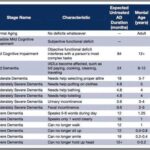
As a nurse who has cared for many terminally ill individuals with Alzheimer's disease over the years, I understand the importance of accurately assessing their functional decline using the Functional Assessment Staging Tool (FAST). The FAST scale provides valuable information about the progression of Alzheimer's disease and helps guide appropriate care planning for patients and their families. In this guide, I will walk you through the process of assessing patients on the FAST scale, starting from stage 1 and discussing when to stop reading the scale for determination. I will also provide three examples of patients at various stages of the FAST scale.
Understanding UTIs in Dementia Patients: A Guide for Caregivers
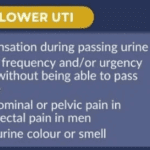
This comprehensive guide helps caregivers understand why urinary tract infections (UTIs) are prevalent in dementia patients. It provides practical advice on prevention, early detection, and effective treatment strategies. Empower yourself with the knowledge to provide the best care for your loved ones.
The Rising Significance of End-of-Life Doulas in Hospice Care

This article delves into the growing importance of End-of-Life Doulas in hospice care. It provides insights into their role, their support to patients and families, and their impact on the quality of end-of-life care.
Revisiting Time Management for a Hospice Visiting Nurse
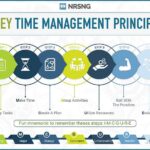
Discover essential time management strategies for hospice visiting nurses. Learn how to balance patient care, documentation, and self-care while navigating the unique challenges of rural hospice work. Improve your efficiency and effectiveness in providing compassionate end-of-life care.
Understanding Your Hospice Care Team: A Guide for Patients and Families
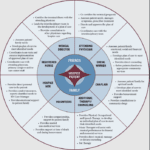
The end-of-life journey can be challenging and emotional for patients and their loved ones. A dedicated team of professionals provides comfort, support, and holistic care in hospice care. Each team member has a unique role, ensuring the patient's physical, emotional, and spiritual needs are met. Let's explore the roles of different hospice team members and how they contribute to your care journey.
Hospice Eligibility for Diverse Dementia Diagnoses
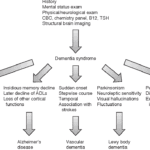
Exploring Hospice Eligibility Criteria for Alzheimer's, Vascular, Lewy Body, Frontotemporal and other Dementias: Empowering Hospice Nurses to Provide Compassionate End-of-Life Care
Type Three Diabetes: Unraveling the Link Between Insulin Resistance and Dementia
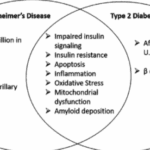
Type Three Diabetes (T3D) may hold clues to dementia. Explore the role of insulin resistance, the APOE4 gene, and personalized treatments.
Understanding Logopenic Primary Progressive Aphasia: A Guide for Families and Caregivers

This guide delves into Logopenic Primary Progressive Aphasia, a unique form of dementia. It provides crucial insights for family members and caregivers, helping them understand the condition and provide adequate care.
Celebrating the Legacy of Florence Nightingale in Hospice Nursing

In the realm of nursing, the spirit of Florence Nightingale, the pioneer of modern nursing, continues to illuminate the path for nurses across various specialties. Her legacy, rooted in compassion, patient-centered care, and unwavering dedication, resonates deeply with nurses from all walks of life. However, we discover a profound connection to Florence Nightingale's nursing model within hospice nursing. This article will explore the distinctive qualities that set hospice nurses apart, including their remarkable autonomy, acute assessment skills, problem-solving abilities, and holistic approach to patient care.
Monologue: Non-Hospice Nurse vs. Hospice Nurse

Hospice is very different from other kinds of nursing and health care. Most of us know that doctors and nurses in hospitals, clinics, nursing homes, and other places care a lot about numbers. They check your heartbeat, blood, and other things to see if they are normal. Sometimes, they do things that make you uncomfortable, like putting a tube in your nose, because they want to fix the numbers. But they don’t always think about how you feel. They are trying to fix the numbers, not you, the person. This short story shows you how non-hospice and hospice nurses are different. A hospice nurse cares more about you, the person.
The Dark Side of Hospice at a Facility

Hospice care in facilities can face challenges due to facility policies, staffing issues, and lack of coordination with hospice providers. This article sheds light on the struggles patients, families, and hospice nurses face in ensuring timely, appropriate care.
Methadone: A Compassionate Approach to Managing Terminal Pain
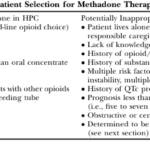
This article delves into the advantages of Methadone over Morphine for pain management in hospice settings. It covers dosage, titration, side effects, and scenarios where Methadone may not be the best choice. Ideal for hospice professionals and caregivers seeking compassionate pain relief options for the terminally ill.
Managing Aspiration Risks in Hospice Care: A Guide for Families

This article is crafted with heartfelt understanding and care, recognizing the challenges you face as caregivers and family members of terminally ill loved ones. Our goal is to empower you with knowledge and practical advice to manage the risk of aspiration pneumonia, a common yet often preventable complication in hospice care.
Navigating Dementia Care Options: A Family’s Guide to Selecting the Right Facility

Deciding on a dementia care facility is crucial. This guide compares personal care homes, assisted living, memory care units, and nursing facilities, detailing Medicaid eligibility, pros and cons, and essential questions to ensure the best care for your family member.
Ensuring Quality Care: The Vital Role of Regular Care Plan Meetings

Uncover the importance of regular care plan meetings at healthcare facilities. This guide details participants, goals, benefits, and risks of non-participation.
How RN Case Managers Can Maintain Good Compliance with Medicare Guidelines

As a seasoned hospice nurse, I recognize the significance of adhering to Medicare guidelines to ensure top-notch patient care. Medicare guidelines offer a roadmap for hospice providers to offer exceptional care to terminally ill patients and their loved ones. Nonetheless, upholding compliance with these guidelines can be a hurdle, especially for smaller hospice providers with limited resources. In this article, we'll delve into how RN case managers can effectively ensure compliance with Medicare guidelines.
Introduction to Terminal Illness and Progressive Diseases
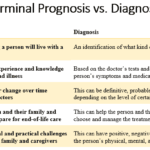
When a loved one is diagnosed with a terminal illness or a progressive disease, it can be a daunting and overwhelming experience for families and caregivers. Understanding the terms and concepts associated with these conditions is essential to providing the best possible care and support. This article aims to clarify the complex journey of terminal illnesses and progressive diseases, offering guidance and compassion to those navigating this challenging path.
Understanding Mild Cognitive Impairment: A Guide for Patients and Families

Discover the essentials of Mild Cognitive Impairment (MCI) with our guide. Understand the signs, diagnosis, and ways to support loved ones facing the risk of dementia. This article provides valuable insights for patients, families, and caregivers to navigate the journey confidently.
